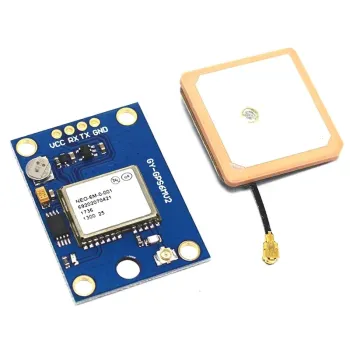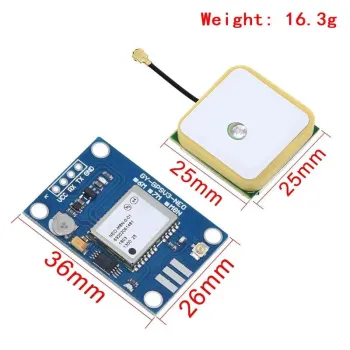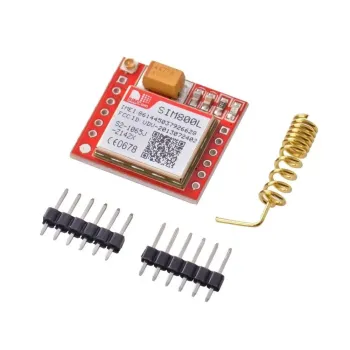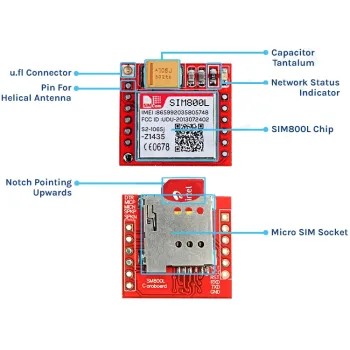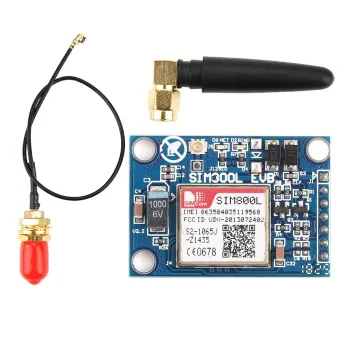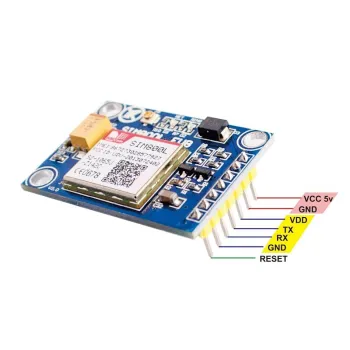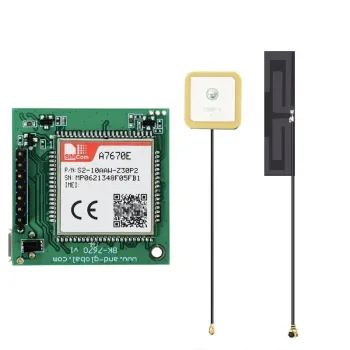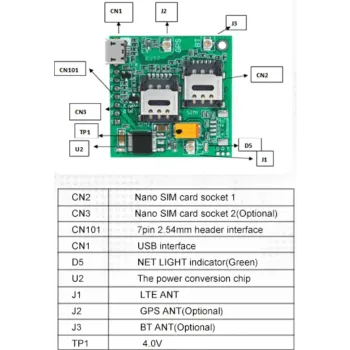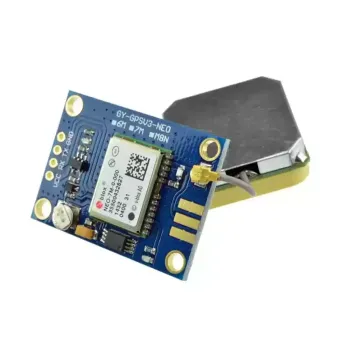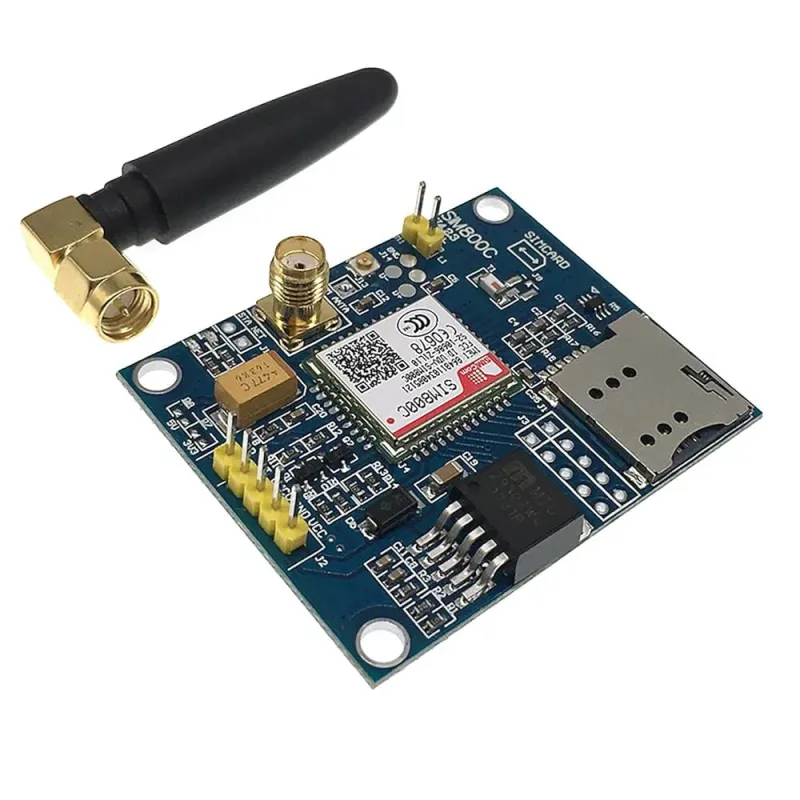
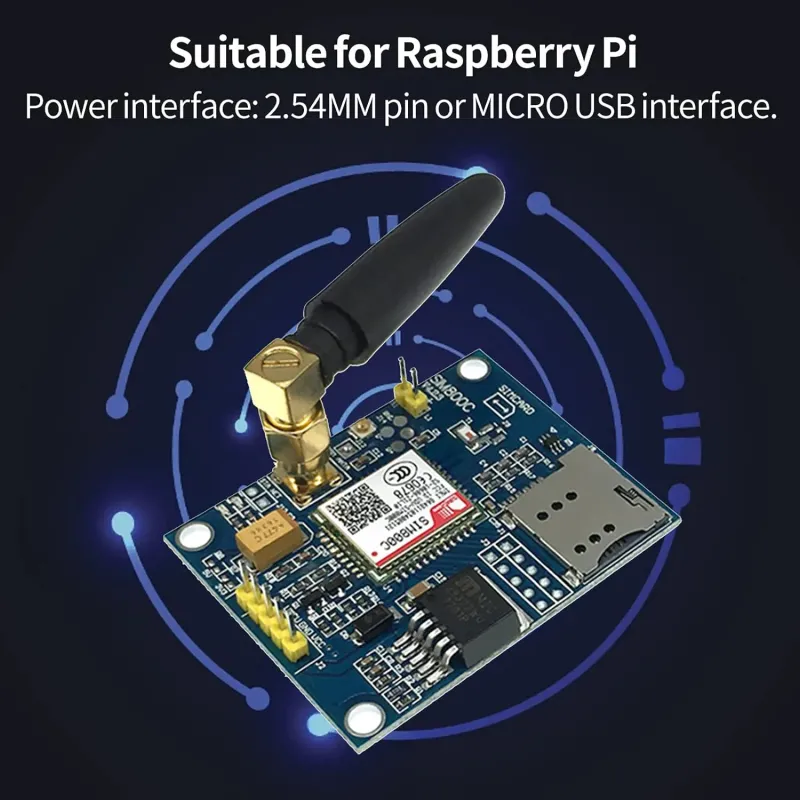
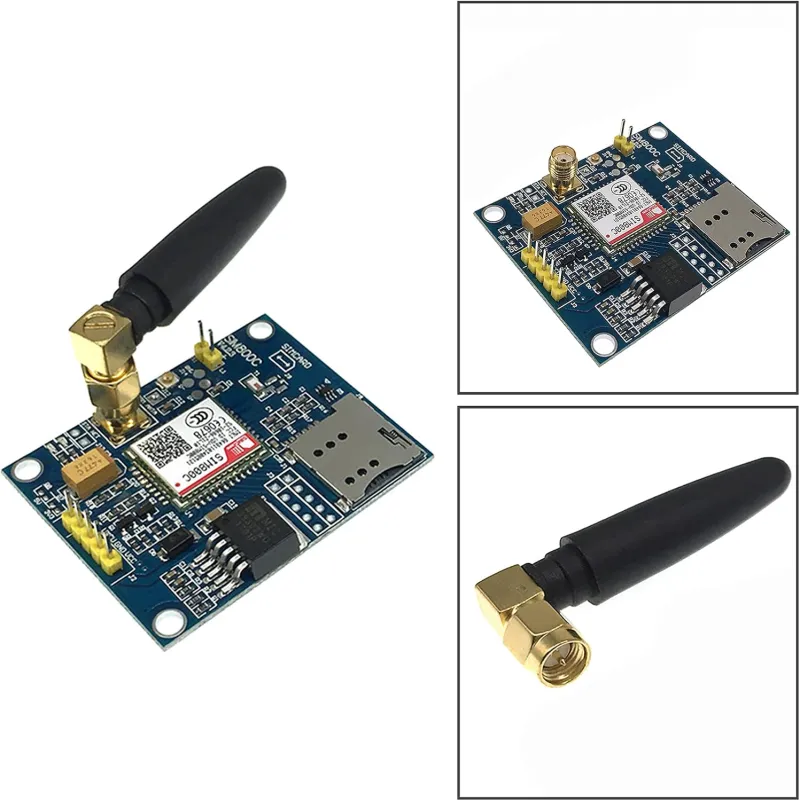
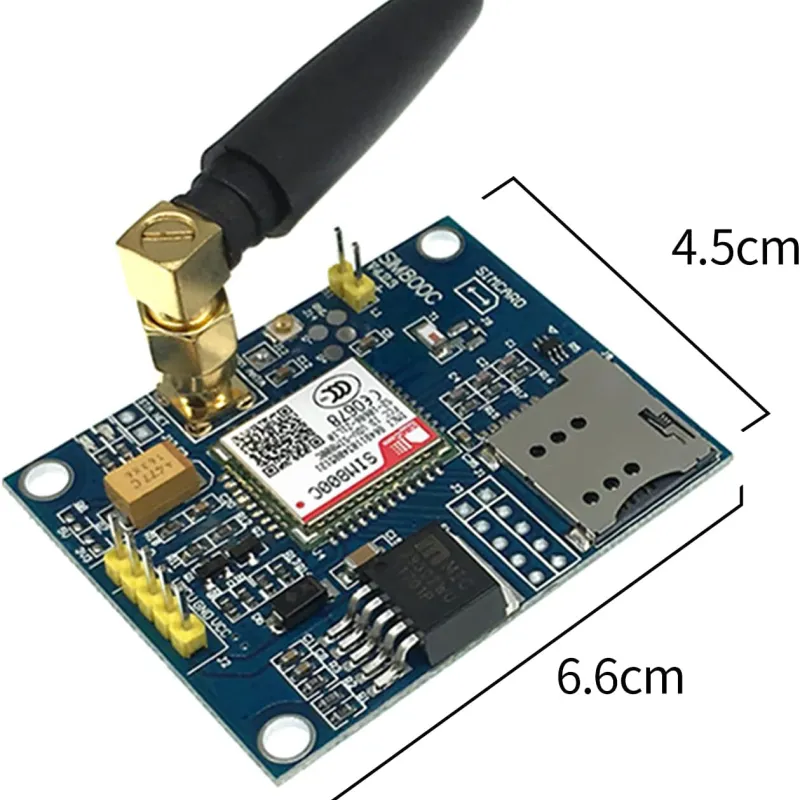
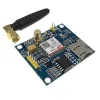
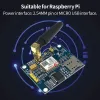
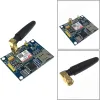
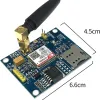
SIM800C GSM/GPRS Module with Antenna and On-board Regulator
Orders placed before 16:30 on weekdays are sent on the same day. Free shipping over 150 RON.
42.78RON
Ex Tax: 42.78RON
- Stock: In Stock
- Model: C281.SIM800C/R
Tags:
GSM module
, GPRS module
, SIM800C
, Antenna
, On-board regulator
, Cellular communication
, IoT connectivity
, Embedded systems
SIM800C GSM/GPRS Module with Antenna Options and On‑Board Regulator
The SIM800C GSM/GPRS module is a compact, feature-rich cellular communication board designed for Arduino, Raspberry Pi, and other microcontroller-based projects. It integrates an on-board voltage regulator for wide input ranges, multiple antenna interfaces (IPEX, SMA, spring), and supports Bluetooth 3.0, TTS, and DTMF. Ideal for IoT, telemetry, SMS, voice, and data applications, this module simplifies integration for both electronics engineers and hobbyists.
🧰 Key Features
- Wide input voltage: Accepts 5–20 V DC via VCC_IN, thanks to the on-board regulator—suitable for diverse power sources in embedded and academic projects.
- Auto power on and network attach: Powers up and attempts network registration automatically. A dedicated PWR pin is provided for user-controlled on/off.
- Built-in level shifting (TTL): On-board level conversion for the main UART provides compatibility with common 3.3 V/5 V TTL microcontroller serial ports—no external RS232 converter required.
- Dual UARTs: Primary TXD/RXD and secondary U2_T/U2_R for flexible communication and debugging.
- Audio interfaces: Header-accessible headphone/speaker and microphone pins for voice applications and testing.
- Bluetooth 3.0: Enhanced antenna performance with support for SPP (Serial Port Profile) and audio services for wireless serial and voice links.
- Multiple antenna options: IPEX (U.FL), SMA, and spring antenna interfaces to suit different environments and enclosure constraints.
- Lithium battery support: Dedicated BAT input for a single-cell 3.7 V Li-ion/LiPo or 18650 battery (3.3–4.4 V operating range).
- TTS and DTMF: Built-in Text-to-Speech and Dual-Tone Multi-Frequency functions for IVR, alerts, and automation.
- Reference program: Example code available—please contact the service team for the reference program to accelerate development.
⚡ Power and Layout Notes
- The module exhibits high peak current bursts during GSM transmissions. Use a stable supply and keep power traces wide (>1 mm) and short to minimize voltage drop and EMI.
- Higher board supply voltages within the 5–20 V range can result in lower input current at the regulator, reducing supply stress; ensure adequate decoupling capacitors near the module.
🔌 Pin Description
- GND: Power ground.
- VCC_IN: Main power input; accepts DC 5–20 V to supply the board.
- RI: Ring Indicator from the baseband—asserts on incoming calls/SMS per module configuration.
- DTR: Data Terminal Ready—used for sleep/flow-control features as per SIM800C firmware.
- TXD: Primary UART transmit (TTL level; do not connect directly to RS232 levels).
- RXD: Primary UART receive (TTL level; do not connect directly to RS232 levels).
- U2_R: Secondary UART (UART2 RX) for auxiliary communications.
- U2_T: Secondary UART (UART2 TX) for auxiliary communications.
- ADC: Analog input (ADC detection) for monitoring external voltages within supported range.
- SPP: Core audio output (speaker positive).
- SPN: Core audio output (speaker negative).
- MC-: Core audio input (microphone negative).
- MC+: Core audio input (microphone positive).
- PWR: Power key control—pull this pin low to toggle module on/off (active low).
- BAT: Lithium battery input (3.3–4.4 V) for direct single-cell connection.
🧩 Integration Tips for Arduino, Raspberry Pi, and MCU Projects
- Connect TXD/RXD to your controller’s UART (e.g., Arduino, Raspberry Pi UART, ESP32, STM32) via the on-board TTL interface. Avoid RS232-level connections.
- Ensure a robust power supply capable of handling GSM burst currents; keep ground returns low impedance and add bulk + high-frequency decoupling.
- Select an antenna interface (IPEX, SMA, or spring) matching your enclosure and RF performance needs for reliable GSM/GPRS connectivity.
- For voice projects, use the SPP/SPN outputs and MC+/MC- inputs; for wireless serial, enable Bluetooth SPP.
📡 Antenna Options
- IPEX (U.FL): For compact builds using flexible pigtail antennas.
- SMA: For external whip antennas and test setups.
- Spring antenna: Space-saving, on-board mounting for prototypes and indoor use.
With its flexible power input, comprehensive I/O, and robust cellular stack, this GSM/GPRS module streamlines integration into electronics components and modules across educational, prototyping, and production environments.
Your orders placed before 16:30 on weekdays are dispatched the same day.

